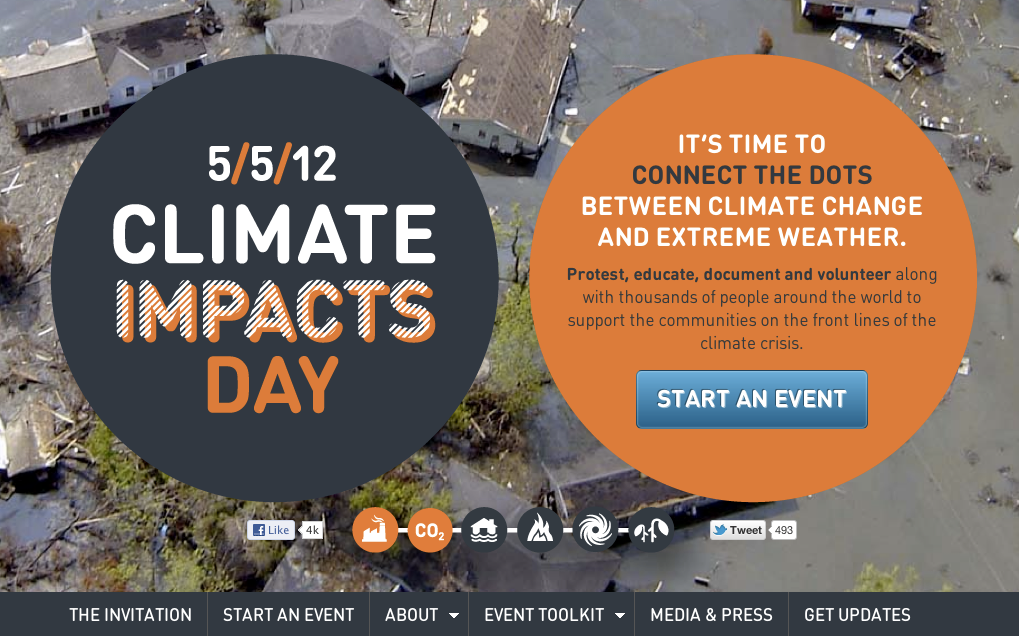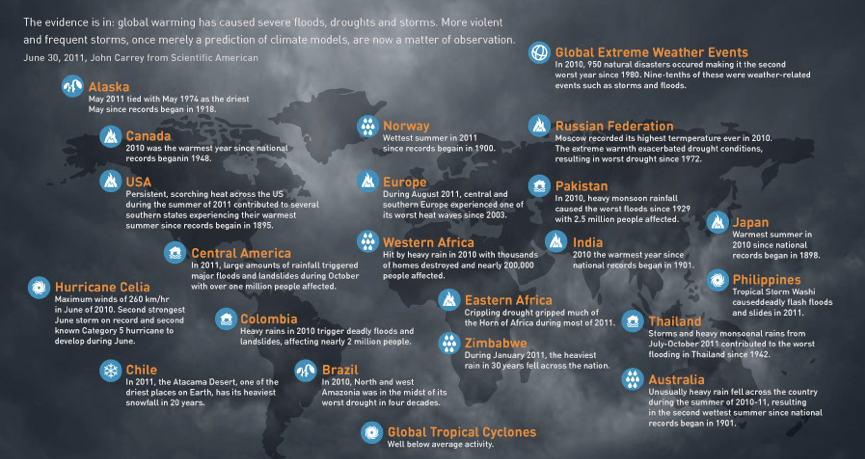On Wednesday, the Intergovernmental Panel on Climate Change (IPCC) will release a detailed, new report that helps connect the dots between extreme weather events and climate change. The findings confirm what millions of us around the world are beginning to see with our own eyes: climate change isn’t a future problem anymore, it’s happening here and now.
Here at 350.org, we think that starting to make the connection between extreme weather and climate change is crucial. Last week, we announced plans for a new global day of action called “Climate Impacts Day” for people from the flood zones of Pakistan to the drought stricken fields of Texas to come together and “Connect the Dots” between extreme weather and other impacts, climate change, and the root causes of the crisis.

Events are already beginning to come in from around the world. In the Marshall Islands, people will dive down to a coral reef damaged by bleaching and storms. In Jordan, activists will host an event in drought stricken regions of the country that are crucial for food production. In North Dakota, USA, park rangers and local citizens will come together in a forest ravaged by the pine beetle, an invasive species that is spreading due to warmer temperatures. And much, much more.
The new IPCC report helps provide the scientific foundation for the discussion we hope Climate Impacts Day helps spark. The special report on extreme weather was authored by 220 authors from 62 countries and incorporates 18,784 review comments. The IPCC put together a helpful video that explains the work that went into the report, some of its key findings, and how policy makers can use the information to better prevent and adapt the impacts of the climate crisis.
The new report confirms the link between climate change and certain examples of extreme weather, especially heat related impacts (such as drought), impacts due to sea level rise (storm surges and flooding), and disasters due to increased precipitation (such as heavy rain, mudslides, and more).
The report also makes clear that poor countries are bearing the brunt of climate impacts, especially in places where large numbers of people live in densely low-lying coastal zones. Even highly developed countries aren’t ready to handle an increase in extreme weather events, however. The United States, for example, experienced at least $55 billion in total damages from weather-related disasters in 2011 according to a new report by Environment America.
Our team at 350.org took at some of this recent research, as well as previous studies, and put together an infographic that visualizes some of the recent trends and weather events that have occured around the planet. Below is a small piece of the infographic, click on the image to view the whole thing:

Getting the discussion going about the potential connections between extreme weather and climate change is also an effective way to educate more people about the climate crisis. This video of a satirical oped written by Bill McKibben, for example, got over 140,000 views soon after it was released:
For many people, climate change can feel like a very distant and future problem. Yet, as more weird weather sweeps the planet — more than 2,000 high temperature records in the United States have been tied or broken since March 1, 2012 — people are beginning to ask important questions about what’s happening to our planet and why.
It’s time to start connecting the dots.